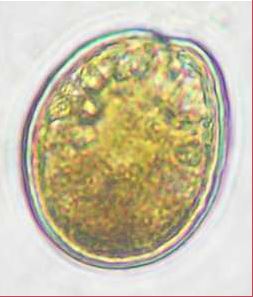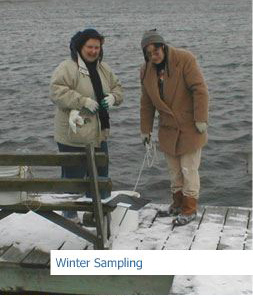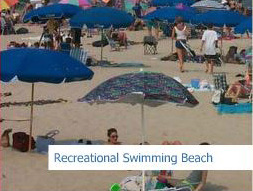Citizen Monitoring Program
2017 WATER QUALITY SUMMARIES AND REPORTS
September 1 through September 22
The eighth set of Citizen Monitoring Reports covering a 3 week period of Sept. 1 to 22, 2017 is below.
- Temperatures were near average. Precipitation was above average for the first ½ of the period, then below average for the second ½.
- Low Dissolved Oxygen conditions (<4.0 ppm) continued to show improvement since August, but persisted in several tributaries and canals. Severely low dissolved oxygen (<2.0 ppm) persisted in one tributary and a few canals. There were widespread reports of diffuse fish and crab kills in upper Indian River, Indian River Bay, Pepper creek and Love creek from 9/16 to 9/22. There was less evidence to directly implicate low DO and/or algae blooms as the cause compared to earlier kills, although these factors were likely to be stressors. Some juvenile menhaden were observed to be weak and gulping near the surface and were easy prey for gulls. Some exhibited lesions on the belly that were indicative of a fungal disease of fish called Kudoa that periodically infects menhaden (but not humans). Observations of distressed fish continued into the last week of September.
- Accumulations of Nuisance Aquatic Vegetation were minor.
- Total Enterococcus Bacteria (TE) levels were elevated in a few tributaries. Extra sampling in Love creek revealed a rather spatially uniform soup. In general, bacteria sampling did not coincide with significant rain events.
- Harmful Algae Blooms in the ocean and DE Bay were limited to background concentrations of a few common taxa. In the estuaries, notable blooms of nontoxic Gyrodinium instriatum (Mahogony Tide) continued to be seen in tributaries and canals, particularly in the Indian River system. Moderate blooms unknown flagellates were seen in a few tributaries. Moderate blooms of potentially toxic blue-green algae Microcystis and/or Aphanizomenon persisted in Red Mill Pond and downstream in Old Mill Creek.
August 11 through September 1
The seventh set of Citizen Monitoring Reports covering a 3 week period of Aug 11 to Sept 1, 2017.
- Temperatures were slightly below average. Precipitation continued to be well above average.
- Low Dissolved Oxygen conditions (<4.0 ppm) were found in many tributaries and canals, and generally showed continued improved conditions since July. Severely low dissolved oxygen (<2.0 ppm) was detected in 2 tributaries and several dead-end canals. There were reports of small fish and crab kills in Pepper creek from 8/19 to 8/24.
- Accumulations of Nuisance Aquatic Vegetation were minor. Rains flushed another notable accumulation of duckweed from Gosling Mill Pond into the surface waters of upper Love Creek on 8/19, similar to the event 10 days before.
- Total Enterococcus Bacteria (TE) levels were quite elevated in a few tributaries, one pond and one bay site. Otherwise values were moderate. In general, bacteria sampling did not coincide with recent rain events.
- Harmful Algae Blooms in the ocean and DE Bay were limited to background concentrations of a few common taxa. In the estuaries, notable blooms of nontoxic Gyrodinium instriatum continued to be seen in tributaries and a canal in the Indian River system. Moderate blooms unknown flagellates were seen in a few tributaries. Moderate blooms of potentially toxic blue-green algae Microcystis and/or Aphanizomenon persisted in Red Mill Pond, Silver Lake and Lake Gerar in Rehoboth, but decreased in Old Mill Creek. In a few locations, no harmful algae were seen.
Please come and join the fun at UD’s Coast Day on Sunday Oct. 1, 2017 from 11am – 5pm at the University of Delaware’s Lewes Campus.
July 28 through August 11
The sixth set of Citizen Monitoring Reports covering the period of July 28 to Aug 11 2017.
- Temperatures were about average during the period. Precipitation was well above average from 3 heavy rain events.
- Low Dissolved Oxygen conditions (<4.0 ppm) were found in many tributaries and canals, but were generally improved since the last report. Severely low dissolved oxygen (<2.0 ppm) was detected in one tributary and a few dead-end canals.
- Accumulations of Nuisance Aquatic Vegetation were minor. Rains flushed a notable accumulation of duckweed into the surface waters of upper Love Creek on 8/8, presumably from Gosling Mill Pond.
- Total Enterococcus Bacteria (TE) levels were quite elevated in many tributaries and one stream. Many samples with high values were associated with recent rain events, but those collected on 8/7 were not.
- Harmful Algae Blooms in the ocean and DE Bay were limited to background concentrations of a few common taxa. In the estuaries, nontoxic Gyrodinium blooms rebounded in cell density in Pepper and Vines creek. Moderate blooms of diatoms and unknown flagellates were seen in a few tributaries. Blooms of potentially toxic blue-green algae Microcystis and Aphanizomenon decreased in Red Mill Pond but increased downstream in Old Mill Creek. In a few locations, no harmful algae were seen.
July 14 through July 28
The fifth set of Citizen Monitoring Reports covering the period of July 14 to July 28 2017.
- Temperatures were above normal in the third week of July and about average during the fourth week. Precipitation was above average with heavy rains on a weekly basis.
- Low Dissolved Oxygen conditions (<4.0 ppm) were widespread in most tributaries and canals, and extended down the estuary to a few bay sites. Severely low dissolved oxygen (<2.0 ppm) was detected in a few tributaries and several dead-end canals. There was a fish kill of several thousand 2-3” juvenile menhaden in upper Pepper Creek on 7/20, presumably due to low dissolved oxygen following extreme heat and an algae bloom. On the following morning, DO was low, particularly at depth.
- Accumulations of Nuisance Aquatic Vegetation were generally minor.
- Total Enterococcus Bacteria (TE) levels were elevated in a few streams and several tributaries. Significant rain events (>0.5”) preceded sampling within a day or 2.
- Harmful Algae Blooms in the ocean and DE Bay were limited to background concentrations of potentially toxic Pseudonitzchia and Karenia papilionacea. In the estuaries, blooms of potentially toxic Heterosigma and Chloromorum were seen in a few tributaries. Nontoxic Gyrodinium blooms persisted in two tributaries, including Pepper creek, where a bloom in decline was observed the morning following the fish kill. Nontoxic blooms of Heterocapsa were also observed in a few locations. Blooms of potentially toxic blue-green algae Microcystis, Anabaena and Aphanizomenon increased in Red Mill Pond, decreased in Lake Gerar, Rehoboth, and stayed about the same in Diamond Pond and Silver Lake, Rehoboth.
June 30 through July 14
The fourth set of Citizen Monitoring Reports covering the period of June 30 to July 14 2017.
- The first half of July was slightly warmer than average. Precipitation was about normal, but was regionally variable due to thunderstorms.
- Low Dissolved Oxygen conditions (<4.0 ppm) were widespread in most tributaries and canals. Severely low dissolved oxygen (<2.0 ppm) was detected in a few tributaries and several dead-end canals.
- Accumulations of Nuisance Aquatic Vegetation were generally minor. A major accumulation was seen at Pot Nets Seaside and in one of the South Bethany canals.
- Total Enterococcus Bacteria (TE) levels were elevated in a few streams and several tributaries, but did not seem to be related to recent rainfall.
- Harmful Algae Blooms in the ocean and DE Bay were limited to background concentrations of potentially toxic Pseudonitzchia. In the estuaries, blooms of potentially toxic Chloromorum were seen in a few canals and one tributary. Nontoxic Gyrodinium and Cryptomonad or Cylindrotheca blooms were seen in a few tributaries. Blooms of potentially toxic blue-green algae Microcystis, Anabaena and Aphanizomenon decreased to moderate levels in Red Mill Pond and Silver Lake, Rehoboth, but increased to moderate levels in Diamond Pond and Lake Gerar, Rehoboth.
June 16 through June 30
This is the third set of Citizen Monitoring Reports covering the period of June 16 to 30, 2017.
- The third week of June was warmer and wetter than normal, while the last week was cooler and drier. Precipitation patterns have become variable due to summer thunderstorms.
- Low Dissolved Oxygen conditions (<4.0 ppm) were widespread in most tributaries and canals. Severely low dissolved oxygen (<2.0 ppm) appeared in some tributaries and reappeared in some canals.
- Accumulations of Nuisance Aquatic Vegetation were generally minor. Major accumulations were seen in several sites the South Bethany canals and in upper Love Creek.
- Total Enterococcus Bacteria (TE) levels were elevated in some upper tributaries and a few bay sites. Rainfall may have contributed to elevated readings.
- Harmful Algae Blooms in the ocean and DE Bay were limited to background concentrations of potentially toxic Dinophysis and Pseudonitzchia. In the estuaries, blooms of potentially toxic Chloromorum and nontoxic Gyrodinium, Pleurochrysis and Navicula were seen in canals and tributaries. Early season blooms of potentially toxic blue-green algae Microcystis and Aphanizomenon persisted in Red Mill Pond and Silver Lake, Rehoboth.
The 2017 Delaware Sea Grant Annual Report-“Putting Science to Work” is available at the following link.
June 1 through June 16
The second set of Citizen Monitoring Reports covering the period of June 1 to 16, 2017.
- The first week of June was cool and wet, but the second week was hot and dry.
- Low Dissolved Oxygen conditions (<4.0 ppm) were widespread. The only severely low readings (< 2 ppm) seen were at depth (0.6 m) in upper Dirickson Creek.
- Accumulations Nuisance Aquatic vegetation were generally minor. Major accumulations persisted at a few sites in the South Bethany canals, and a major accumulation developed at Diamond Pond.
- Total Enterococcus bacteria levels were generally low, except in a few upper tributaries and streams.
- Harmful Algae blooms were limited to blooms of non-toxic dinoflagellates in a few tributaries and canals, and an early appearance of potentially toxic blue-green algae blooms in Red Mill Pond and Silver Lake in Rehoboth.
April and May
The first set of UD Citizen Monitoring Reports for 2017 covering April and May.
- April tended to be warmer and drier than usual, but May tended to be cooler and wetter.
- Low Dissolved Oxygen readings (<4 ppm) began to be detected in some residential canals and upper tributaries in April. Severely low readings (<2 ppm) were restricted to a few canal systems. Note that this report only lists DO readings less than 5 ppm.
- Minor accumulations of Nuisance Aquatic Vegetation were widespread. Major accumulations of filamentous green algae formed floating mats in several canal systems. Decay of algae may have contributed to low dissolved oxygen readings.
- Total Enterococcus (TE) bacteria levels were elevated in a few locations in late May and may have been related to recent heavy rain.
- At the Indian River Inlet and in the lower DE Bay, blooms of potentially toxic algae were limited to low levels of Pseudonitzchia in April and low levels of Dinophysis acuminata in May. A bloom of Dinophysis was seen in a canal system, so outside of approved shellfish harvesting areas. A few blooms of non-toxic centric diatoms and Cryptomonads were seen in tributaries and canals.
CURRENT REPORTS
- Low Dissolved Oxygen Reports
- Nuisance Aquatic Vegetation Reports
- Bacteria Reports
- Harmful Algae Reports
ARCHIVE OF PREVIOUS YEAR’S REPORTS


Copyright © 2016 University of Delaware College of Earth, Ocean, and Environment and the Delaware Sea Grant College Program | 302-645-4252





